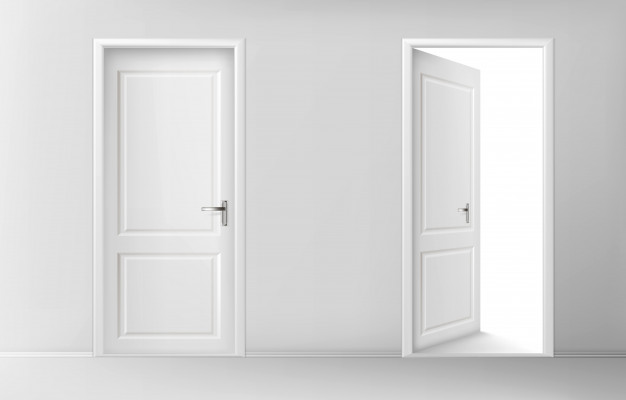The open vs closed mortgage discussion is one that often comes up. Most homeowners appreciate the idea of an open mortgage because an open mortgage can be 100% paid off any time, without any penalty. So it offers maximum flexibility. Perfect. But what’s the catch?
The catch is that an open mortgage can easily have a much higher rate – up to double the rate of a closed mortgage.
So is it worth paying the extra rate for the open flexibility? In most cases, as we will see – it is not worth it.
Thankfully, there are alternatives to fully open mortgages, and also there are features of closed mortgages that allow for significant flexibility. So for these reasons over 99% of Canadians end up selecting a closed mortgage.
The remainder of this article will expand on this idea of why in the open vs closed mortgage decision, closed wins the vast majority of the time. Specifically, we will look at:
- Closed vs open mortgage rates
- The perfect open mortgage alternative to help minimize risk and save money
- How a closed mortgage can be similar to an open mortgage

Closed vs open mortgage rates
In looking at closed vs open mortgage rates, it’s easy to see that closed mortgage rates are substantially lower than open mortgage rates. For example:
As of January 2023, a fully open mortgage typically rate: 6.99% – 7.49%
- On the lower end of the open mortgage rate spectrum is likely a variable mortgage rate, and on the higher end is likely a fixed-rate mortgage, fully open for up to 5 years.
As of January 2023, a 5 year fixed closed mortgage is averaging 4.59% at Altrua Financial.
- Variable mortgage rates are priced about the same as fixed mortgage rates currently because it doesn’t look like variable rates will be increasing any time soon, plus closed variable-rate mortgages typically have lower penalties to break than closed fixed-rate mortgages.
So given a minimum 2% + difference between open vs closed mortgage rates, the savings on a closed mortgage of about $2,000 per year, on every $100,000 of mortgages is pretty compelling.
The perfect open mortgage alternative to help minimize risk and save money
One great alternative to an open mortgage is the Home Equity Line of Credit or ‘HELOC’ mortgage.
Often these mortgages will have a portion that is a closed mortgage, at a lower closed rate, and then a portion of the mortgage is home equity-based credit line.
The benefits of this kind of ‘all in one’ mortgage arrangement are:
- A lower closed rate such as 4.59% on the base section of the mortgage.
- A HELOC rate is about 6.99% variable (typically prime + .20% – + 0.50%) on this portion of the mortgage.
- A HELOC is essentially an open mortgage because it can be paid in full at any time, without penalty. Or conversely, it can be withdrawn in full at any time
- The option to withdraw funds from a HELOC is not possible with a standard open mortgage. So this can add a great deal of flexibility for some people who want to pay off a large amount at one time, and then withdraw a large amount at one time.
- Because the closed portion of the mortgage is smaller, if you decided to completely pay out the mortgage, there would be less penalty to pay out the closed portion. Keeping in mind that the HELOC portion would not have any penalty and because of the closed portion. So this can reduce the risk of paying a higher penalty.
So if you are seeking an open mortgage, a happy medium could be an all in one mortgage with both a lower rate, closed mortgage component, and a higher rate open HELOC component.
At Altrua, we have access to one of the best, most cost-effective all in one mortgage solutions in Canada. Connect with us for a discussion on this.
How a closed mortgage can be similar to an open mortgage
As much as many homeowners want the LOWEST mortgage rate, and to pay the least for their mortgage, they also want the flexibility to pay the mortgage off sooner and to leave the mortgage with little to no expense should they move out of the house.
The nice thing about closed mortgages is that the good ones contain such a good amount of flexibility that for most people, it is just as good as an open mortgage, just at a much lower rate.
- 20% per year prepayment privilege: You could pay off the entire mortgage in as little as 5 years, without any penalty. On good mortgages, extra principal prepayments can be made on any payment date, up to 20% per year.
- Portable to a different home: You can literally move the mortgage from one house to another, without breaking it. This would have the benefit of avoiding a penalty to break the closed term, and also you could potentially hold on to a lower rate if rates are higher in the future.
- Increase and blend, or pay down on a move
- Relatively low penalties to break are possible
- A Home Equity Line of Credit can be added: For qualified borrowers, a HELOC could be added to a closed term mortgage without breaking the base closed mortgage.
So seen from this perspective, for many homeowners, a closed term may actually be more flexible than a higher rate open mortgage.
Connect with us at your convenience, or search our site for the best open and closed mortgage rates, and answers to all of your mortgage questions.


